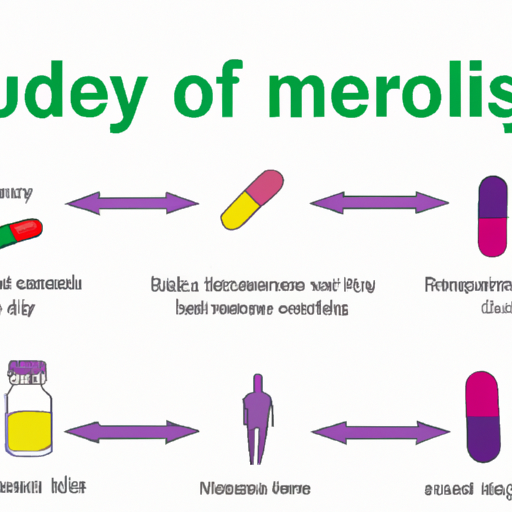Pharmacokinetics and pharmacodynamics are crucial aspects of understanding how medications work within the human body. These two fields of study delve into the intricate processes that determine how drugs are absorbed, distributed, metabolized, and eliminated, as well as how they interact with target receptors to produce therapeutic effects. By comprehending the principles of pharmacokinetics and pharmacodynamics, healthcare professionals can effectively diagnose and treat various conditions. In this article, we will provide an overview of the diagnosis and treatment associated with these fields of study. Additionally, we will explore the symptoms and causes of pharmacokinetic and pharmacodynamic variations, shedding light on the complexities of medication efficacy and safety. Understanding these concepts is essential for ensuring optimal patient care and guiding the development of innovative therapeutic interventions.
1. Understanding Pharmacokinetics and Pharmacodynamics: An Overview of Diagnosis and Treatment
Pharmacokinetics and pharmacodynamics are two essential concepts in the field of medicine that play a crucial role in the diagnosis and treatment of various diseases. Understanding these concepts is vital for healthcare professionals to effectively prescribe medications and ensure their optimal therapeutic outcomes.
Pharmacokinetics refers to the study of how a drug is absorbed, distributed, metabolized, and excreted by the body. This process determines the concentration of the drug in the bloodstream over time and helps healthcare providers understand how the body processes and eliminates the medication. By understanding pharmacokinetics, healthcare professionals can determine the appropriate dosage, frequency, and route of administration for a particular drug.
On the other hand, pharmacodynamics focuses on how a drug interacts with the body to produce its desired effects. It involves studying the drug's mechanism of action and its effects on specific receptors, enzymes, or other molecular targets within the body. Pharmacodynamics helps healthcare providers understand how a drug produces its therapeutic effects, as well as any potential side effects or adverse reactions.
Diagnosis and treatment heavily rely on the principles of pharmacokinetics and pharmacodynamics. When diagnosing a patient, healthcare professionals consider various factors such as age, weight, genetics, and underlying health conditions. These factors influence how the body will metabolize and respond to a drug, ultimately affecting its efficacy and safety.
Furthermore, understanding the pharmacokinetics and pharmacodynamics of a drug is crucial for determining the appropriate treatment regimen. For example, some medications may need to be administered multiple times a day to maintain a therapeutic drug concentration in the body, while others may require a loading dose to achieve the desired effect initially. Additionally, certain drugs may be contraindicated in patients with specific medical conditions or may require dose adjustments in patients with impaired liver or kidney function.
Moreover, pharmacokin
2. Unraveling the Science: Symptoms and Causes of Pharmacokinetic and Pharmacodynamic Variations
Pharmacokinetics and pharmacodynamics are two essential components of understanding how drugs interact with the human body. These concepts play a crucial role in diagnosing, treating, and predicting the effects of medications. However, variations in pharmacokinetics and pharmacodynamics can lead to diverse responses among individuals, making it necessary to unravel the science behind these variations.
Pharmacokinetics refers to the study of how drugs are absorbed, distributed, metabolized, and excreted by the body. It involves understanding the time course of drug concentration in the blood and tissues, with factors such as absorption rate, distribution to target sites, metabolism, and elimination rate influencing drug effectiveness. On the other hand, pharmacodynamics relates to the effects of drugs on the body, including the drug's mechanism of action, efficacy, and toxicity.
Individuals can exhibit variations in both pharmacokinetics and pharmacodynamics due to several factors. One significant factor is genetics. Genetic variations can influence the expression and function of drug-metabolizing enzymes, drug transporters, and drug receptors, leading to differences in drug response. For example, certain genetic polymorphisms can affect the metabolism of certain medications, resulting in slower or faster clearance rates from the body. These variations can ultimately determine the effectiveness and safety of drug therapy.
Additionally, age and physiological conditions can impact pharmacokinetics and pharmacodynamics. As individuals age, changes in organ function, such as liver and kidney function, can affect drug metabolism and excretion. This can lead to altered drug concentrations and increased risks of adverse effects in older adults. Similarly, individuals with liver or kidney diseases may experience impaired drug clearance, prolonging the drug's effect and potentially increasing the risk of toxicity.
Drug-drug interactions are another important consideration in pharmacokinetic and pharmacodynamic variations. When
3. Navigating the Complexities: Exploring the Impact of Pharmacokinetics and Pharmacodynamics on Medication Efficacy and Safety
Pharmacokinetics and pharmacodynamics are two fundamental concepts in pharmacology that play a crucial role in the diagnosis, treatment, and understanding of medication-related issues. These concepts help us understand how drugs interact with the body and how their effects are influenced by various factors.
Pharmacokinetics refers to the study of how drugs are absorbed, distributed, metabolized, and eliminated by the body. It explores the processes by which drugs travel through the body, including how they are absorbed into the bloodstream, how they are distributed to target tissues, how they are metabolized by enzymes, and how they are eventually eliminated from the body. Understanding pharmacokinetics helps healthcare professionals determine the most effective dosage and dosing regimen for a particular drug, as well as predict its potential interactions with other medications.
On the other hand, pharmacodynamics focuses on the study of how drugs exert their effects on the body. It examines the relationship between drug concentration and the resulting biological response. Pharmacodynamics helps us understand the mechanisms of action of drugs, including how they bind to specific receptors, activate or inhibit biochemical pathways, and ultimately produce therapeutic or adverse effects. This knowledge is essential for tailoring treatment plans to individual patients, as different individuals may respond differently to the same drug due to variations in pharmacodynamics.
The interplay between pharmacokinetics and pharmacodynamics greatly influences medication efficacy and safety. Understanding how a drug is absorbed, distributed, metabolized, and eliminated allows healthcare professionals to determine the optimal dose and dosing frequency to achieve the desired therapeutic effect. Additionally, knowledge of pharmacokinetics helps identify factors that may affect a drug's pharmacological activity, such as liver or kidney dysfunction, genetic variations, or drug interactions. By considering these factors, healthcare professionals can make informed decisions regarding dosage adjustments or alternative treatment options to maximize

